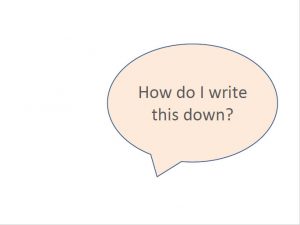Can I make a mind map for a 2 hour workshop?
Nope.
First set
Over a few months I have to give a long workshop about European privacy laws and Exploratory Testing. Sometimes it is tempting to put all the information in one extra extra extra large mind map.
Giving me a disappointing delay in processing information.
Forget it.
Wait. I use several mind maps.
Yes. That is more comfortable.
In this blog post I will show titles of mind maps to prepare myself for my workshop at Agile Testing Days.
It took me months to make these mind maps. This is my way to collect more information than I would be able to share.
This gives me enough space to tailor the workshop on the spot.
Did you ever tried to entertain people for 20 minutes?
I will have to teach people for 2 hours.
Good luck. To me.
Why do I share information about my mind maps?
It will give the delegates some hints what I will tell.
I also want to share my preparation with newbie speakers.
Another reason is to attract more diverse speakers on stage. Preparations is like taking small steps.
There are even sessions for speaking at the same conference.
So what are you waiting for?
In order to avoid boredom I just select a few mind maps for a small introduction.
T
There is no way to predict the people in my audience. So I made a lot of categories. Next to the beginners, I have exercises for experienced testers, testers using tools, and managers.
An experienced tester knows what a dataflow test is. Now I also have to explain this to a manager. But I come back later to DiSSS.
Second set
The framework of my workshop is in the file ‘Talk Lawful Thing to test 1c’. If this sounds strange to you, I completely understand you. It started as a talk and grew to a workshop.
After a while I could not add new perspectives. So I made some other mind maps.
Resources are things you can use after my workshop. This part seems relatively simple. I only had to put in some good resources in it. I made this exercise challenging for myself by adding information written by women.
A good opening or intro of the workshop sets the atmosphere for the coming hours. If I will casually tell something to complete strangers at the beginning of the workshop, it is because I rehearsed it more than 100 times.
Up till now I could not find a shortcut.
Rinse and repeat.
Third set
Tim Ferris has a never ending serie of experiments.
Yes, I made a typo in the file name. And for me it is about speed.
Tim developed some acronyms like DiSSS.
- Deconstruction is the first action to understand how people perform tasks.
- Selection is the second task to select which techniques have the most impact.
- Sequence: what is the best order of actions?
- Stakes: what’s in it for me?
CaFE
- Compression: how can I compress the information on 1 page?
- Frequency: how often should I do it to become good?
- Encoding: what is a good way to encode the information? Like CaFE.
Is it possible to use these acronyms for GDPR testing?
I think so.
The dataflow test is a good candidate for Selection.
I wrote you I would come back to DiSSS.
The first test session needs extra attention from my side.
During my workshop there are several sessions during which delegates are going to test. Hands on is different from watching. It is like a tennis game with everyone on the tennis court.
And I am the referee.
The mind map ‘20190528 add Lawful thing’ contains information I still need to process.
A workshop is like work.
Speaking matters
In this blog post I share my latest progress on my speaking.
One of my reasons is to get more diverse speakers on stage.
The making and the scale of my mind maps might intimidate newbie speakers.
What I left out, is my adding of nodes in the mind maps over time. This could be days apart.
What I left out, is the long study.
If I add 1 branch to a mind map every day, I have a mind map of 365 branches after a year. I started in the summer of 2018.
If I go in more details, the more branches I will add on a single day.
A talk takes time.






















